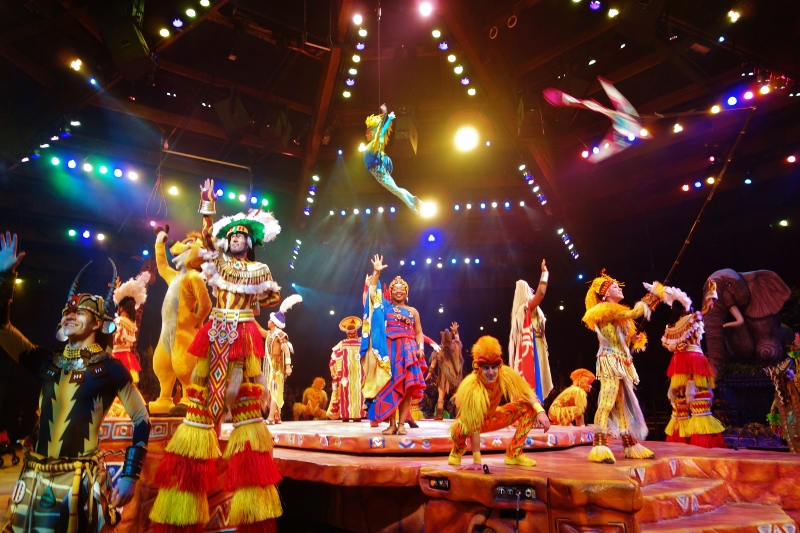Physical Challenges at Walt Disney World
By Dave Shute
(A slightly different version of this first appeared in WDW Magazine.)
First timers sometimes underestimate the physical challenges that Walt Disney World can present.
- You will be walking a lot—probably more than you think.
- There are some slopes to go up and down—often minor, but still real.
- Some of the hotels don’t have elevators, so if you are on an upper floor at one of these, there will be stairs to deal with.
- You will be outdoors in the sun a lot.
- And there are pools everywhere at the hotels, many unguarded, so safe swimming is worth thinking about too.
You might even have to dance with Belle!
There’s nothing at Disney World that requires you to go through Navy SEAL training to prepare—although that won’t hurt! But if you and your family are physically and mentally prepared, and have the right gear—that is, more than one pair of broken-in walking shoes each—you’ll have more fun than families who aren’t’ prepared and don’t have the right shoes!
At the end of January and beginning of February 2015, my sister and I pushed my 84 year old dad around Disney World (and Shades of Green and Port Orleans Riverside, our hotels) in a wheelchair.
That hadn’t been our plan, but it turned out that walking around at Disney World was too much for him.
And it might be for you, too.
None of the Disney World parks is small and compact—and three, the Animal Kingdom, Magic Kingdom, and Epcot—are quite large. While you’ll see some wild numbers on how much walking there is in the parks, three to five miles a day is not at all uncommon.
Your walking day likely will start well before you even get to the parks, and continue after. The only hotel at Disney World that can be reasonably described as compact is the tower at the Contemporary Resort. Your rooms at other hotels may be quite a hike from breakfast, the transportation areas or both—especially if you are staying at one of the large moderates Port Orleans Riverside, Caribbean Beach, or Coronado Springs.
Some of the Disney hotel areas don’t even have elevators—there’s none at Caribbean Beach, none in the Alligator Bayou section of Port Orleans Riverside, and none in most of the buildings at Old Key West.
So what to do? If you aren’t in shape, walk before you go in the shoes you plan to use! Build up to the ability to walk five miles a day, with some one or two story stair climbs at the beginning and end, and you’ll be fine on the physical front. And don’t skip doing it in the shoes you plan to wear. Your shoes need to be well broken in for your visit, as blisters are not the proper souvenir for a Disney World trip!
And if you or a member of your party can’t walk like this? Strollers, wheelchairs and scooters are available just inside the parks for rent, first come, first served. That’s what we did. Or if you need them to get to the parks, or around your resort, you can rent them for the duration of your visit from any number of local providers.
By the way, a wheelchair will put you in different seats than you likely are used to at many of the shows. At Festival of the Lion King, we were right in front!
Also worth noting:
- You’ll be outside a lot—more than you might think—so think about sun protection.
- Almost all the Disney hotels have at least one pool without lifeguards. If any of your crew is a weak swimmer, or a non-swimmer, consider either building swimming skills before you go, or sticking to the pools with lifeguards—there’s at least one at every hotel.
- Pushing someone in a wheelchair is a LOT harder than it looks—while my dad had a great time, my sister and I wore ourselves out!!
I often say that Disney World is more like a backpacking trip than it is a day at the beach. This applies especially to pre-planning, and getting ready for the physical demands of the trip. Get yourself and your shoes prepared, and everything will be much more fun!
Follow yourfirstvisit.net on Facebook or Google+ or Twitter or Pinterest!!





4 comments
For our Disney trip last October I walked an average of 10.3 miles a day, according to my FitBit. My highest day was 16.55 miles. All of this milage was in spite of the fact that we were staying in the Contemporary tower, which is the only resort you’d describe as compact!
Be prepared. Take small walks around your community and work up your stamina. You’ll be glad you did.
Hey Anthony! FWIW most trackers rely on your steps actually being the length you have programmed in. Because you take so many very short steps while waiting in lines, they tend to wildly overstated walking distances at WDW.
Not sure why this is often forgotten by visitors, but please remember to hydrate! Every time I visit I see people who have fallen ill due to the heat and not drinking enough fluids or eating properly. PLEASE remember to break to eat and drink! Your body will thank you!
Great point KE! I’ve twice come a little nearer heat stroke than I would have liked, once at Fort Wilderness and once at DTD.
Leave a Comment | Ask a Question | Note a Problem